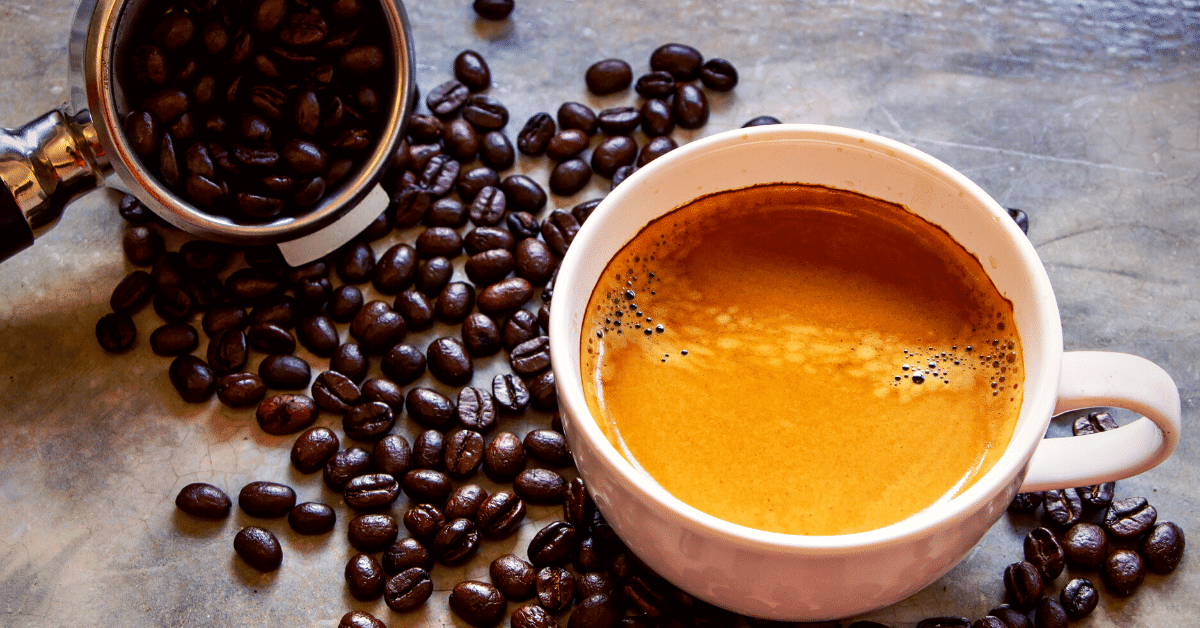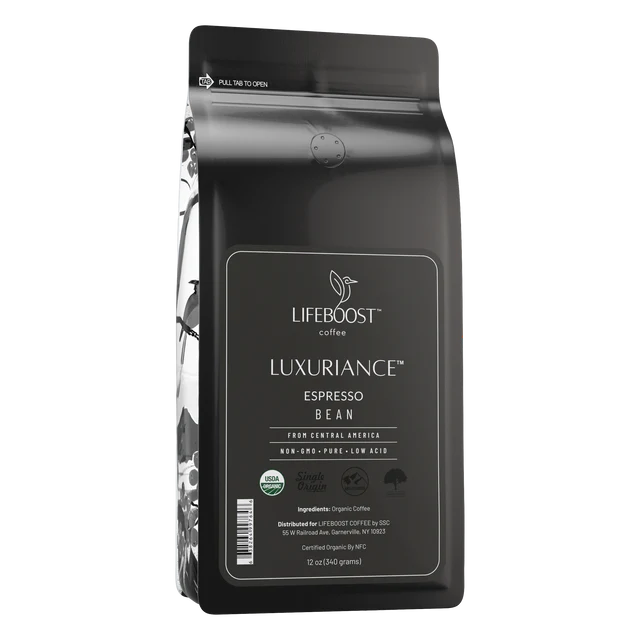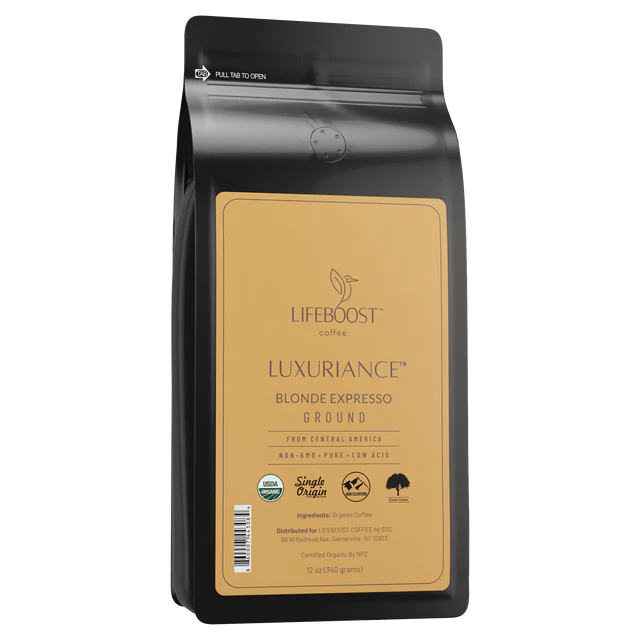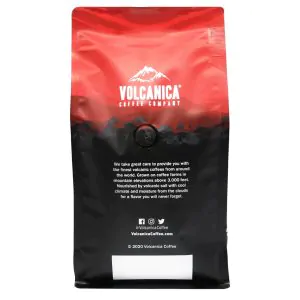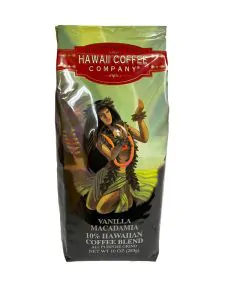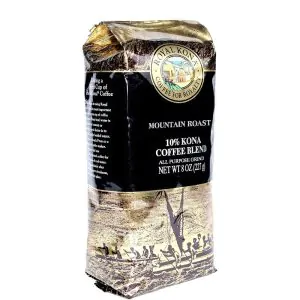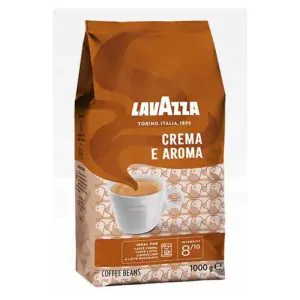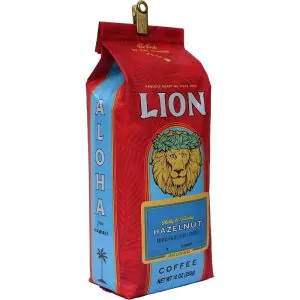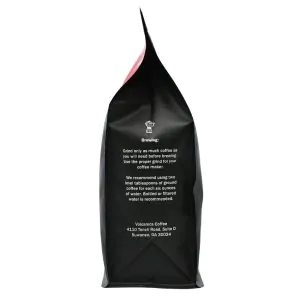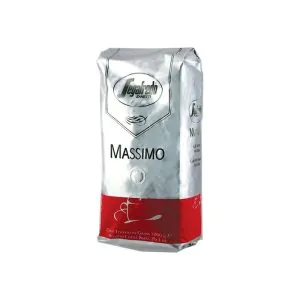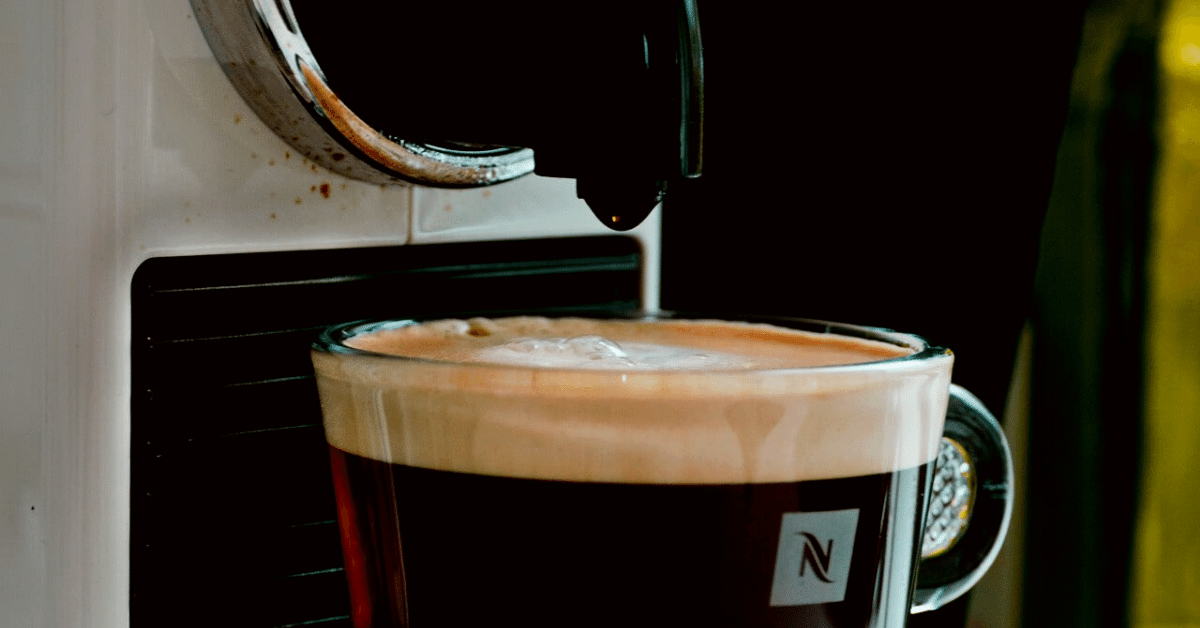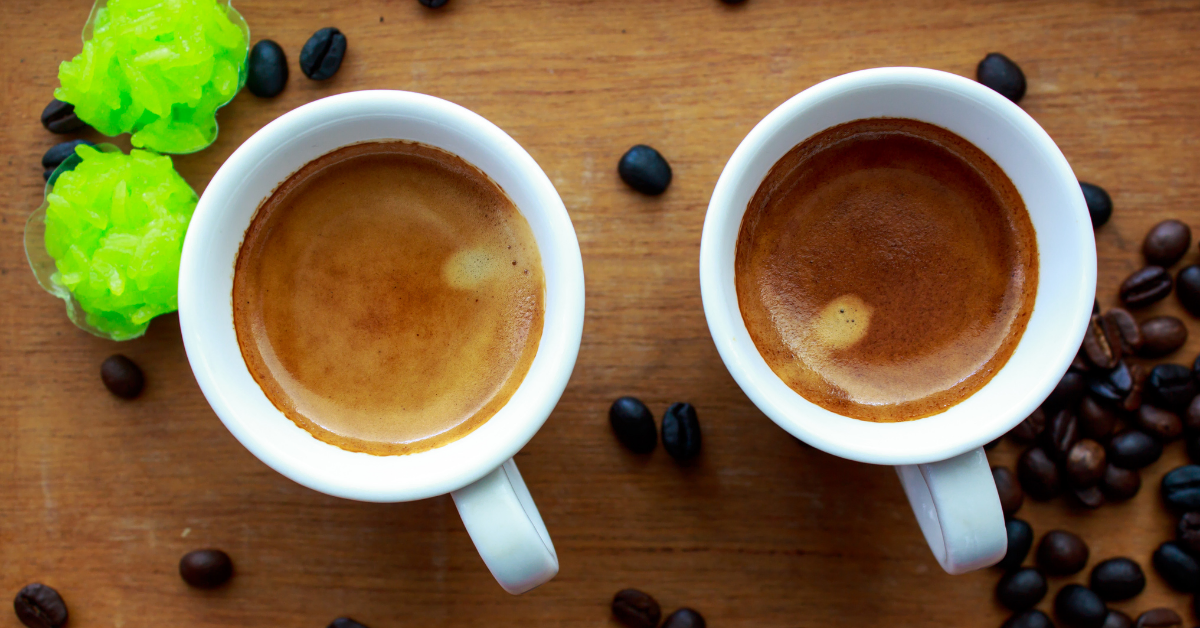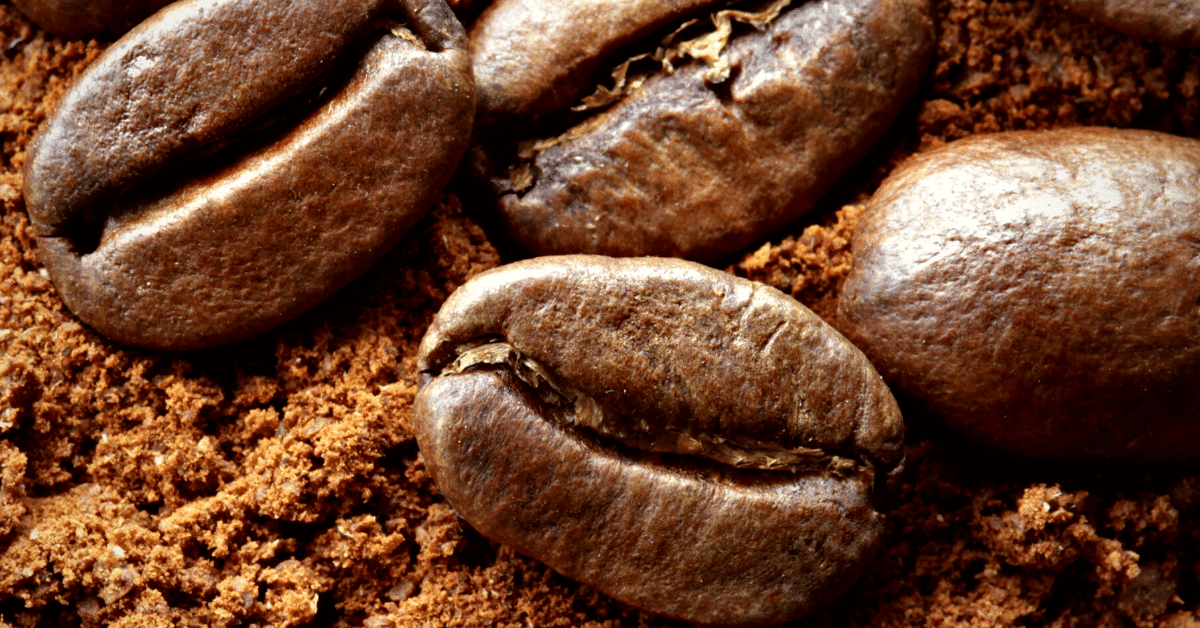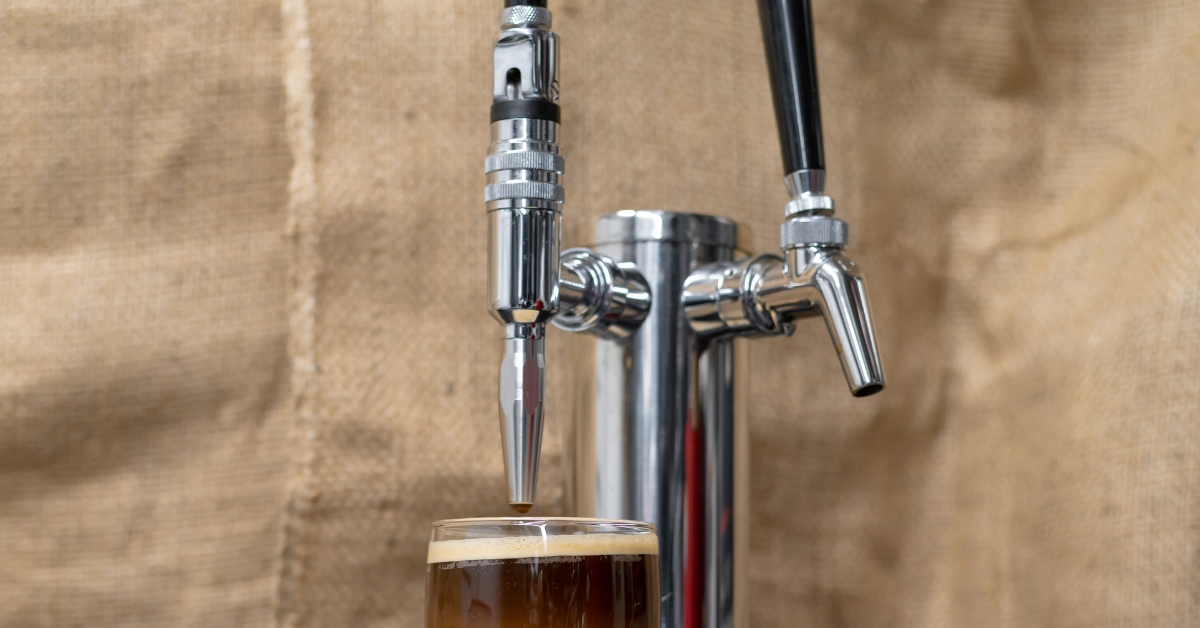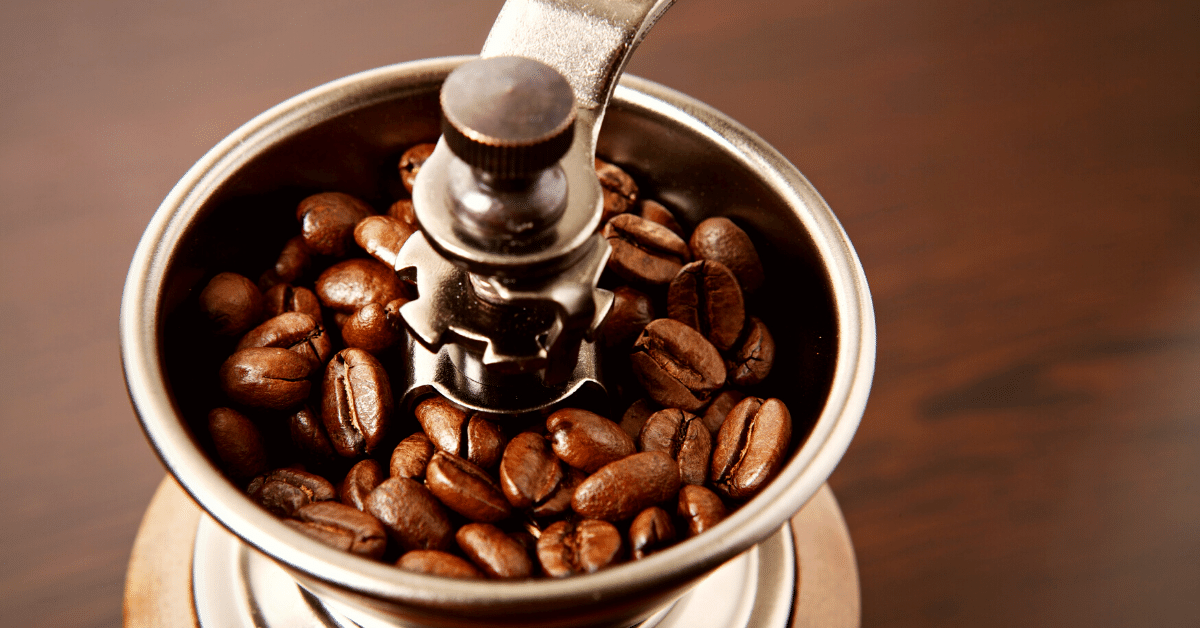Short on time? Our top pick is Lifeboost Espresso Coffee.
Picking great espresso beans for your coffee maker can be tough, especially since there are so many options out there.
Luckily, I’ve done the research and put together a guide on the best espresso beans on the market.
Plus, I’ve thrown in a quick shopping guide to help you pick the right beans.
Let’s get started!
Top 12 Best Espresso Beans
- Lifeboost Espresso Whole Bean Coffee (Best Overall)
- Volcanica Costa Rica Peaberry Coffee (Best Specialty Beans)
- Lifeboost Blonde Espresso Coffee (Best Light Roast)
- Volcanica El Salvador Peaberry Coffee (Best Aroma)
- Vanilla Macadamia Flavored Coffee, 10% Hawaiian Blend (Longest-Lasting)
- Illy Intenso Whole Bean Espresso Dark Roast (Best Dark Roast)
- Mountain Roast 10% Kona Blend Coffee (Best Premium Roast)
- Lavazza Crema e Aroma Whole Bean (Best for Subtle Flavors)
- Lion Hazelnut Coffee (Best for Flavored Coffee Lovers)
- Tanzania Peaberry Coffee (Best for Those Who Love African Beans)
- Segafredo Massimo Whole Bean (Best for Milk-Based Drinks)
- Lavazza Super Crema Whole Bean (Best for Thick Crema)
Lifeboost Espresso Coffee
There are three things I like in my espresso coffee: a rich body, bold flavor, and smooth taste when mixed with milk and sugar.
Lifeboost Espresso has it all.
What’s more, it’s hand-picked, spring water washed, sun-dried, organic, and 3rd party tested for toxins. That means you really get the purest and most natural coffee there is.
It’s roasted dark – just the way I like it. But not too dark, though. You will still feel rich undertones of chocolate and cacao.
The flavor is bold, so it can pierce through the creaminess of a latte, but not too bold to be drunk on its own.
I like that I can get my Lifeboost Espresso coffee on a subscription. So, the fresh batch arrives just in time when I’m finished with the bag. Pretty convenient!
The only downside is that it can be a bit expensive for those on a budget. However, you can save up to 42% with a subscription, so that’s worth considering.
Pros
- Single-origin, which means you get unblended flavor notes
- Low acid, so it’s smooth and not too sharp on your palate
- It’s roasted per order, which means you always get the freshest batch
- Available both as whole bean and pre-ground, so it doesn’t matter if you have a grinder or not
Cons
- A bit expensive, so it’s not for those on a budget
Volcanica Costa Rican Peaberry Coffee
Costa Rican Peaberry is the best specialty coffee on the list.
What makes it so special?
Peaberry coffee beans. These beans are a result of a mutation of the coffee plant. The regular coffee cherry has two beans inside, while the peaberry has only one big bean. It makes the coffee rich in flavor and delicious.
Part of what really makes this Volcanica coffee unique is that the beans are handpicked. In fact, during the harvesting process, farmers only wind up keeping about 5% of the beans!
For the 5% of beans that do make the cut, these only get roasted once an order has been placed. That way, the company can ensure the quality and freshness of the beans.
You can order these beans in just about any roast you like, although my personal favorite is the medium roast.
Just note that these beans can only be ordered on an as-needed basis. If you want fast coffee from the grocery store, these beans aren’t going to work.
Pros
- The beans are handpicked, so they’re high quality
- The beans are single-origin, so you can clearly taste the flavors
- They’re only roasted to order, so you get super fresh coffee
- They’re grown at high elevation, so they have sweet tasting notes
Cons
- They’re not commercially roasted, so you’ll have to order them on an as-needed basis online
Lifeboost Blonde Espresso Coffee
Lifeboost Blonde Espresso is the lightest roasted coffee out there. So, if you are keen on sharp flavor notes, brightness, and fruity undertones – this coffee is a good choice.
I know what you’re thinking. Since it’s a light roast, how come it’s good in espresso? Wouldn’t it be too mellow? Well, it can happen with light roasts. But not with this one.
It’s a full-bodied coffee that makes a slightly acidic, punchy, and noticeably sweet espresso shot. Plus, it’s single-origin, so the notes of raw sugar and black tea, with fruity undertones, are really prominent.
Being a blonde roast makes this coffee a wrong choice for milk-based espresso drinks. It’s too mellow not to be overwhelmed by milk, so it’s best if you drink it black. Unfortunately, this means it’s a no-go for latte lovers.
Pros
- 100% Arabica coffee and single-origin, which means you get the most quality and flavorful beans out there
- Organic and 3rd party tested for mycotoxins, heavy metals, pesticides, and other toxins, so you can be sure you’re getting the purest coffee
- Each bag is freshly roasted, meaning your coffee won’t get stale fast
- Available on subscription, which can save you money and secure you always have a fresh batch at your doorstep
Cons
- Lightly roasted, so it doesn’t pair well with milk because of the brightness
Volcanica El Salvador Peaberry Coffee
Another Peaberry coffee is the El Salvador blend. This particular brew is perfect for those who like a slight bitterness in the taste.
Despite the bitterness, this coffee has a silky smoothness. Plus, you’ll also notice a touch of almond and soft floral notes.
Still, I wouldn’t recommend it to beginners who are not used to the bitter notes of coffee. This coffee is pretty sharp, so If you like mellow flavors, it might be too much.
What’s unique about this coffee is that it’s grown at higher than usual elevations of between 4100 and 5413 feet above sea level. Pair that with the coffee farm’s decades of growing experience, and you’ve got a winning combination.
Even though it’s technically an espresso roast, that makes this a pretty versatile pick. The rich flavors produced by this type of farming make it a great choice for filter methods, such as French Press, drip coffee, or even cold brew.
Pros
- Complex flavor notes, so it’s great for filter brews
- Has an intense aroma, so you get a full-bodied cup of coffee
- The beans are handpicked, so they’re guaranteed to be high quality
- Has subtle undertones, so the taste is unique
Cons
- It’s slightly bitter, so it’s not ideal for beginners
Vanilla Macadamia Flavored Coffee, 10% Hawaiian Blend
Hawaii is famous for having some of the world’s best coffee. And, if you’re really interested in a good brew, you’ve got to try the Vanilla Macadamia from Hawaii Coffee Company.
As the name indicates, this bean has a tasty touch of vanilla and a subtle Macadamia nut flavor. But these aren’t artificial. They’re just natural parts of the coffee’s tasting notes.
In terms of taste, this coffee stands out for its sweetness. It’s low in acidity, so it’s great for beginners or those with sensitive stomachs.
Also, thanks to its packaging, the coffee lasts up to approximately 12 months. Of course, if you like fresh coffee, this isn’t exactly going to be helpful.
You should also note that the coffee isn’t single origin. So, you lose a fair bit of complexity in the tasting notes.
Pros
- Has an intense smell, so you get an aromatic cup of coffee
- Is naturally flavored, so there are no additives
- Balanced acidity, so it’s great for those with sensitive stomachs
- Has excellent packaging, so it can last for up to a year
Cons
- It’s not single-origin, so you lose some of the bean’s complexity
Illy Intenso Whole Bean Espresso Dark Roast
If you’re a fan of dark, intense espresso that transports you straight to Italy, the Illy Intenso is the way to go. Illy’s Whole Bean Espresso Dark Roast is made up of 100% Arabica beans.
Despite the fact that they’re Arabica and so are more balanced, these beans are roasted for a long time. As a result, they have robust flavors and thick oils, which make for a great crema.
The beans have a consistent flavor with cocoa undertones.
What’s particularly great about these beans is that their full flavor means they work especially well for milk-based drinks. You can add steamed or foamed milk without drowning out the flavor of the coffee.
Just note that the bag is a bit delicate. The seal has been known to burst, which can leave a huge mess on your counter.
Pros
- They have lots of oils, so they produce a great crema
- They’re very intense, so they work well for milk-based beverages
- They have a consistent flavor, so you get uniform brews
- They have unique undertones, so they’re interesting to brew
Cons
- The cap is delicate, so the bags have been known to explode upon opening
Mountain Roast 10% Kona Blend Coffee
A favorite of the best-known hotels in Hawaii, Mountain Roast 10% Kona Blend is a coffee that works well in both hot and iced espresso drinks.
It actually only includes 10% Kona coffee, but that’s enough to give you some of the perks of a Kona blend. You see, Kona beans are famous for their cultivation’s high standards and quality control. They’re grown on volcanic soil, which gives them a unique flavor.
This blend is a light roast, single-origin coffee. This coffee’s flavor is sweet and smooth due to its light roast. It also has an interesting blend of fruity and earthy notes.
However, the beans don’t have a very strong aroma. So, you’ll miss out on that part of the coffee-drinking experience.
Pros
- Has a smooth taste, so you get an easy-to-drink espresso
- Has a full and balanced body, so it works well for both hot and iced drinks
- Almost imperceptible bitterness, so it’s great for sensitive palates
- Single-origin, so you get subtle tasting notes
Cons
- Has a mild aroma, so you don’t get a strong-smelling cup of coffee
Lavazza Cream and Aroma Whole Bean
This Lavazza Cream and Aroma Whole Bean blend has fruity and floral notes with subtle chocolate undertones.
It’s a unique mix of Arabica and Robusta beans, meaning you get subtle flavors with a powerful body.
There are many flavors that the manufacturer plays with, including: spices, caramel, biscuits, malt, and honey.
Lavazza Cream coffee beans are quite oily, so they produce a rich crema. As a result, this coffee is great for making fun latte art if you’re brewing milk-based beverages.
These beans have a low acidity thanks to their medium roast. So, they’re not hard on the stomach.
The only downside to these beans is that they’re a bit pricey. If you get through a lot of coffee, that can add up quickly.
Pros
- Has a unique mix of flavors, so it’s great for those who like subtle tasting notes
- Has a rich crema, so it’s great for latte art
- Has a persistent aroma, so you get a lingering coffee smell when you brew these beans
- Low acidity, so it’s good for those with sensitive stomachs
Cons
- A bit pricey, so it’s not ideal for those on a budget
Lion Hazelnut Coffee
Lion Hazelnut Coffee is a great choice for those who love flavored brews. This blend brings a smooth and subtle hazelnut flavor to every cup of coffee.
The beans are Arabica and are selected by hand to have a quality product. These beans are rich in antioxidants, adding a nice little vitamin boost to your morning ritual.
Although the hazelnut is what stands out about this coffee, there are also some hints of coconut in the beans. If you’re a regular coffee drinker, this can be a nice addition to your brew.
Unlike most flavored coffees, this one is not overly sweet. Personally, I love this because it lets you really enjoy the coffee taste without drowning out any flavors.
However, there is a reason why espresso coffee beans aren’t usually medium roasted. As such, their aroma isn’t as powerful as a darker blend. Plus, they tend to lose their aroma quickly.
Pros
- The beans are handpicked, so you get high-quality brews
- The beans contain antioxidants, so they add some vitamins to your morning coffee
- They’re not overly sweet, so you can taste the coffee’s subtleties
- Has a hint of coconut, so even though they’re flavored you still get complex tasting notes
Cons
- Lose their aroma quickly, so you don’t get a strong-smelling brew
Tanzania Peaberry Coffee
This coffee is obtained from the high slopes of Mount Kilimanjaro. Thanks to the coffee’s high altitudes, you get some really unique tasting notes.
For one thing, this coffee stands out for its rich, wine tones. In addition, you’ll notice hints of dried fruit, salted chocolate, and orange.
These beans are highly recommended for those who enjoy African coffee in general. Not only do they give you the earthy flavors African coffee is known for, but you get unique tasting notes.
The beans in this blend are hand-picked and sun-dried. They’re produced as a medium roast, leading to a balanced flavor.
The one problem with these beans is that they’re not as bold as other Peaberry blends. If it’s bold coffee you’re after, you’re better off going with a Costa Rica or El Salvador blend.
Pros
- Sun-dried, so they’re sweet and fruity
- Has a bright acidity, so they make for a smooth cup of coffee
- Have a balanced flavor, so they make for a well-rounded cup of coffee
- Almost imperceptible bitterness, so they’re easy-to-drink
Cons
- Not as bold as other Peaberry blends
Segafredo Massimo Whole Bean
If you like chocolate, you should definitely check out the Segafredo Massimo Whole Bean blend. This is a blend of Arabica and Robusta, but I feel like the flavor of the Robusta beans is more persistent.
As a result, the cocoa undertones in this coffee are very prominent. On top of that, the beans have a hearty aroma that makes for a great-smelling cup of coffee.
Despite the brew’s intensity, this coffee is super smooth. It also produces a pretty thick crema, so it’s great for tasting the different layers in your cup of coffee.
The only problem with this coffee is that a lot of the more subtle tasting notes don’t really bloom when you brew it. While you’ll taste the cocoa undertones, you’re not likely to taste much else.
The medium dark roast makes this bean ideal for those who like a strong flavor, but not too intense as with a full dark roast.
Pros
- Has a rich aroma, so you get a great-smelling cup of coffee
- The Robusta flavors stand out, so it’s an intense brew
- Has cocoa undertones, so it’s great for chocolate lovers
- Are whole beans, so you can play around with the grind size and consistency
Cons
- Chocolate flavor notes persist but don’t fully bloom, so there’s not a lot of nuance to your coffee
Lavazza Super Crema Whole Bean
If you love a thick crema on your coffee, then the Lavazza Super Crema should be on your shopping list. As the name would suggest, this espresso bean produces a rich, velvety crema.
This roast is medium dark which I feel leans more towards dark. However, it’s not overly oily, so it’s light on your palette.
The blend is a mix of Arabica and Robusta. Thanks to the Arabica beans, it has sweet, fruity notes. But, the Robusta beans bring out a strong flavor and add a powerful aroma.
Other tasting notes you might find in this coffee include honey and nuts. Just note that it can be a bit acidic, which can be tough for those just getting into coffee drinking.
Pros
- Is a mix of Arabica and Robusta, so you get a smooth coffee with a powerful punch
- Has an intense aroma, so you get a rich-smelling brew
- Lots of crema, so it’s great for those who like straight espresso
- Packed with nitrogen, so it has a longer shelf life
Cons
- Higher levels of acidity, so it’s not ideal for beginners
What To Look For in Espresso Beans?
Now that we’ve covered some of the best espresso beans out there let’s go over how to pick the right ones for you.
That way, you’ll be able to choose which beans make the most sense for your preferences.
Here are a few factors to consider when buying espresso coffee beans.
Origin
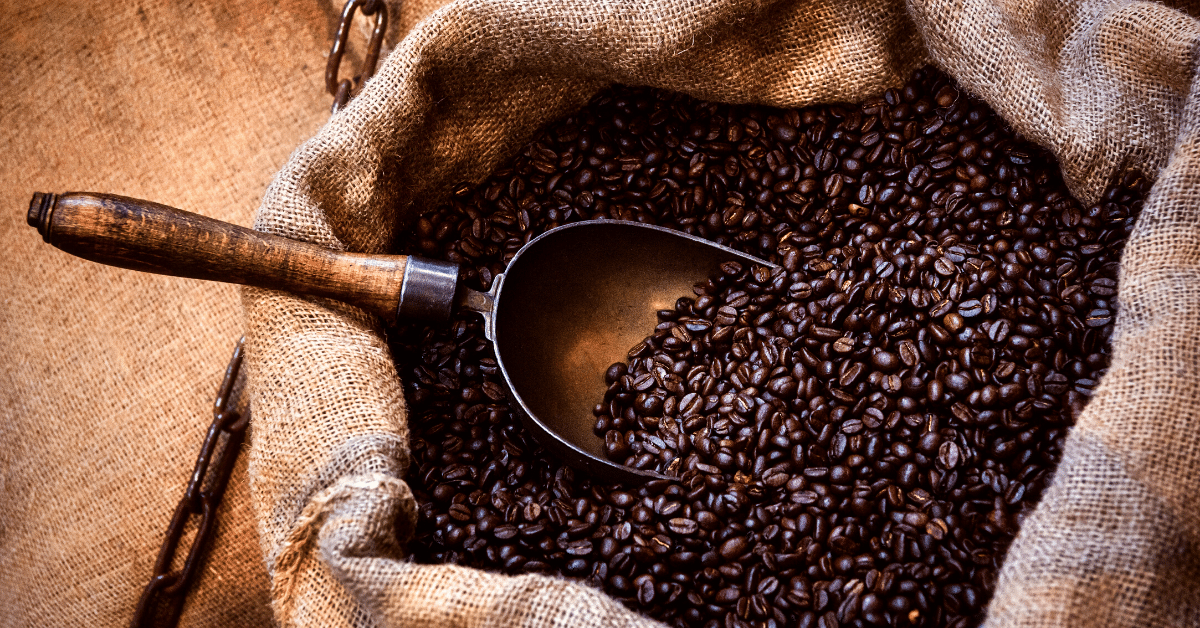
Coffee beans are classified mainly by the region in which they were grown. The flavor profile is influenced by the place of origin, which is why this is so important.
You see, the taste of the coffee has to do with the altitude, temperatures, type of land, and method of harvesting. All of these factors change depending on where the beans are grown.
To give you a better idea, here are a couple of the biggest coffee regions around the world and what their beans taste like:
| Region | Top Countries | Flavor |
| South America | Colombia and Brazil | Sweet, medium-bodied, and low in acidity |
| Central America | Guatemala, Costa Rica, and Honduras | Full to medium-bodied, spicy, and high in acidity |
| Asia | Vietnam and Indonesia | Full-bodied, mild acidity, balanced flavors |
| Africa | Ivory Coast and Ethiopia | Aromatic, light-bodied, mild acidity |
Of course, there are other origins out there with different characteristics. And each country has unique tasting notes that vary between their brews.
That means that you may need to look a bit more deeply into the origin of the coffee. When you do, you can figure out exactly what flavors and mouth-feel you’ll get from their coffee.
Regardless, looking at the origin of your coffee beans can help you determine which ones to choose. Think about what types of flavors you like and look for regions that produce those types of beans.
Roast
Besides the origin of your brews, you’ll also need to look at the roast. The roast affects the freshness and the flavor of the coffee.
Firstly, let’s start with the freshness. When you look for espresso coffee beans, be sure to check the roast date listed on the packaging. Look for beans that were roasted as short of a time from the current date as possible.
This helps ensure the quality of the coffee, intensity of flavor and aroma, and shelf-life of the beans.
If you don’t see the roast date on the packaging, there’s a good chance it was roasted several months ago.
Another thing to know about the roast is that the different types of roasts affect the flavor. Here are a few of the most popular roasts:
- Light Roast: This type of roast is characterized by the fact that it provides a more pronounced and intense acidity to the drink. In this type of roasting, the original flavor is preserved more.
- Medium Roast: This type of roast can increase the sweetness and acidity, as well as the intensity of the aroma of the coffee beans. Since the roast notes are not so evident, we can notice the balance of flavors.
- Medium-Dark Roast: The intensity of the acidity is reduced at the same time as the complexity of the aromas. The coffee caramelizes during roasting, which causes more bitter notes to appear. The body becomes heavier.
- Dark Roast: This type of roast is ideal for people who like a touch of bitterness in their coffee. It has prominent spicey and dark chocolate notes. It pairs well with milk and cream since the intense flavor will not be overwhelmed with sweetness.
Once again, thinking about the types of flavor profiles you like in your coffee can direct you toward which roast would be best for your needs.
That way, you’re able to select a coffee that not only works for the espresso machine, but that makes coffee you’ll actually want to drink.
Arabica vs Robusta
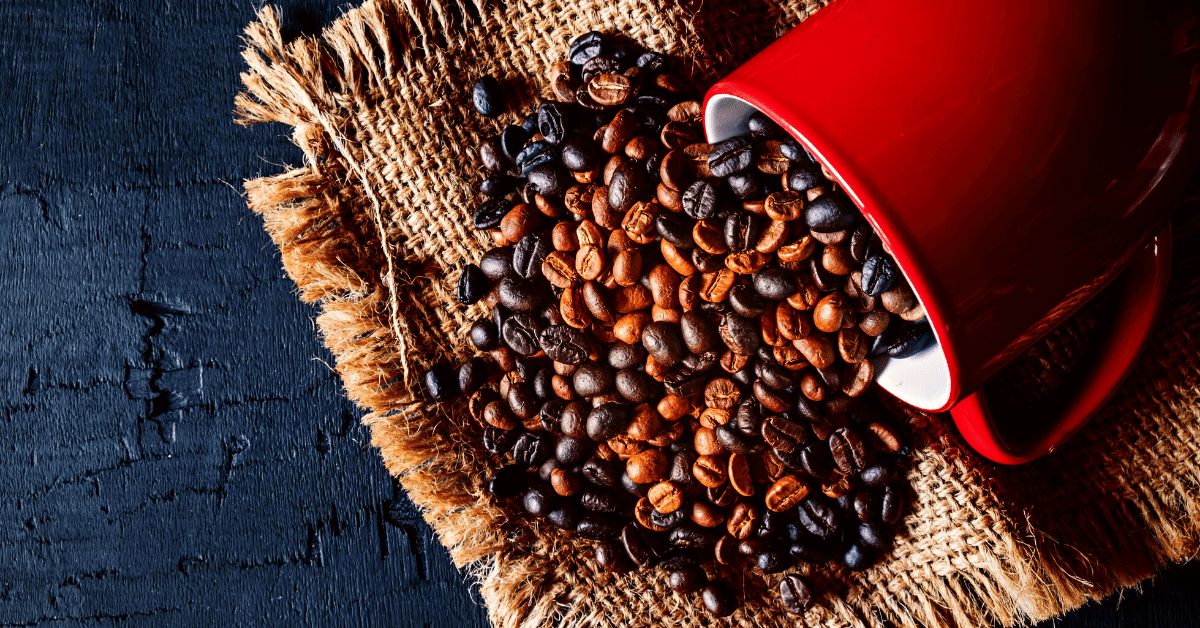
Finally, the type of coffee bean you choose affects your coffee’s flavor. There are around 100 known species of coffee. But, the best known and most commercialized with the Arabica and Robusta.
Arabica coffee is found more in the regions of Central and South America, Asia, and East Africa.
Arabica coffee is fairly acidic but is quite well balanced. In these beans, there is a great wealth of flavors and aromas, so it’s a coffee full of nuances.
An Arabica bean coffee generally has fresh, floral, and fruity notes, which makes it a smooth cup of joe, and very pleasant to the palate.
Robusta coffee is usually grown in Brazil, Africa, and some areas of Asia. It has a much more bitter taste than Arabica, which makes the drink full-bodied and more intense.
This coffee is characterized by notes of wood and nuts. This coffee has more creaminess and texture.
Robusta coffee bean has around 2.5% more caffeine than Arabica. That’s why it’s more bitter than Arabica, but also much stronger in terms of an energy boost.
Regarding which is the best option for you, it all depends on the type of texture, flavor, and aroma you’re looking for in a coffee.
If what you want is a versatile flavor with a fruity and floral touch full of nuances that is soft and sweet, you might want to go for Arabica coffee.
If, on the other hand, you want something intense, your best choice would be Robusta bean.
The Verdict
The Lifeboost Espresso Whole Bean Coffee is definitely your best bet if you’re looking for smooth, bold, and flavorful espresso beans.
This coffee is single-origin, organic, and hand-picked, so you can rest assured you’re getting the best beans for your espresso coffee.
But, in case you want to try something different, just make sure to take a careful look at the beans. Check the roast, decide whether you want Arabica or Robusta beans, and look at the coffee’s origins.
That way, you’ll have no problem selecting the best coffee beans for you.

